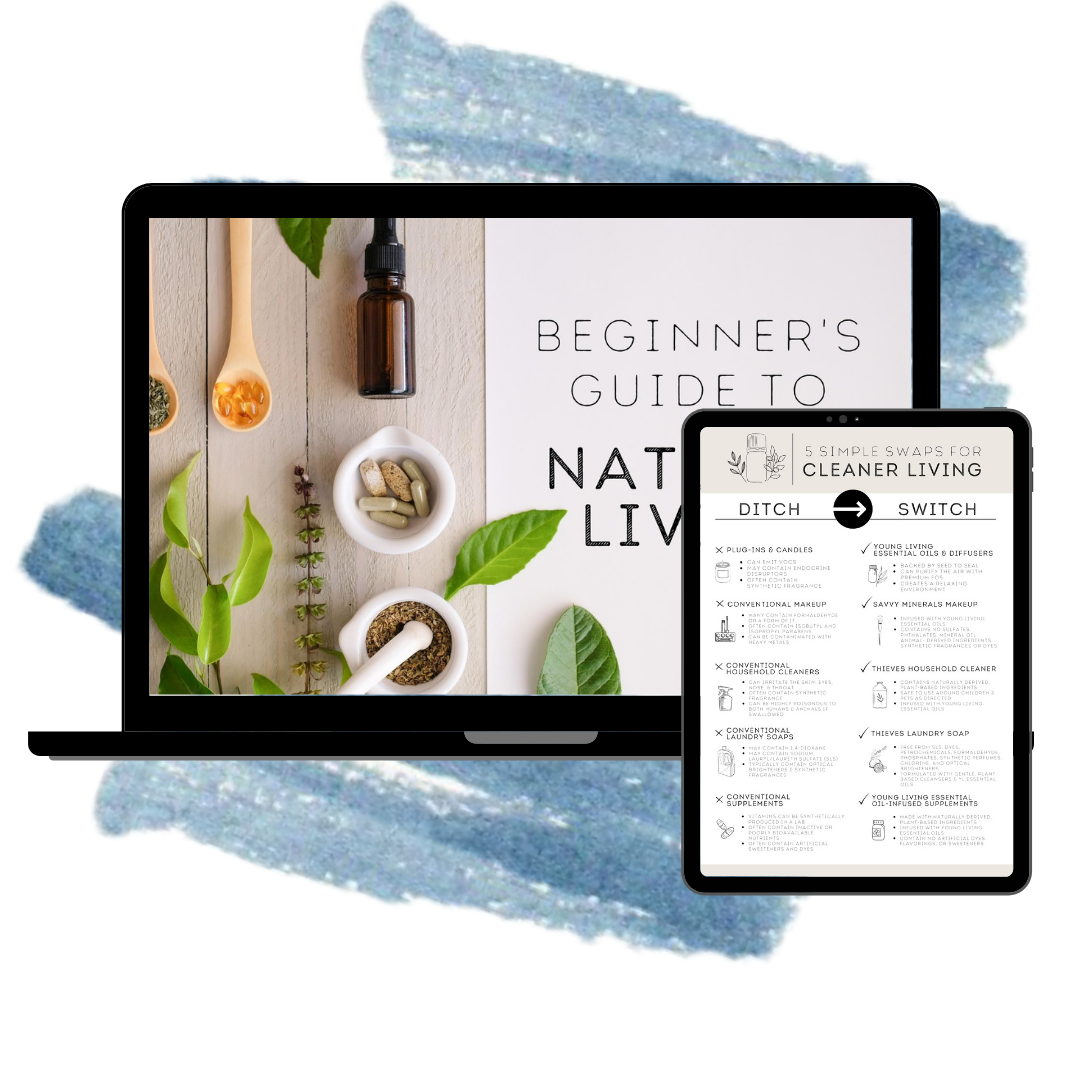
I Admit I was a Soda Junkie for many years…. until about 4 years ago when non-healthy things started to happen. I suspected….and heard…. nothing good comes with drinking “pop”, but did I listen…..NO!
Recently, I noticed a graphic on Facebook and this was too good of a message not to pass along! This ONE PICTURE confirms what my body was trying to tell me for many years!
The graphic was posted by “naturopathic.physician” out of Fairfield Connecticut. I highly recommend you look them up and follow them for additional tips.
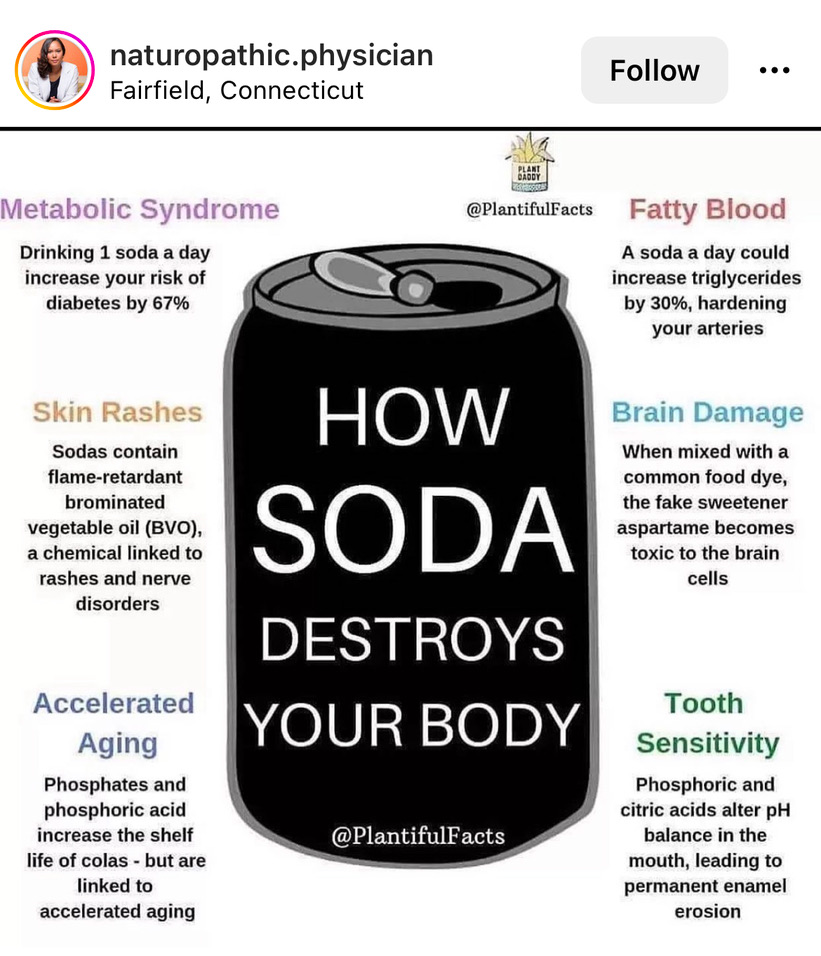
Below is How Soft Drinks…a.k.a. “Pop”, “Soda” can hurt you!
PS: it doesn’t matter what brand the soft drink is as they all have the same damaging impact!
FYI: I expanded with more information from the graphic text by “Googling” the dangers of <ingredient>.
Metabolic Syndrome
- Drinking 1 soda a day increases your risk of diabetes by 67%. Metabolic syndrome is a cluster of conditions that occur together, increasing your risk of heart disease, stroke and type 2 diabetes. These conditions include increased blood pressure, high blood sugar, excess body fat around the waist, and abnormal cholesterol or triglyceride levels.
Skin Rashes
- Soft drinks contain flame-retardant brominated vegetable oil (BVO) a chemical linked to rashes and nerve disorders. Brominated vegetable oil (BVO for short) is a food additive sometimes used to keep citrus flavoring from separating out in sodas and other beverages.
Accelerated Aging
- Phosphates and phosphoric acid increase the shelf life of colas – but are linked to accelerated aging. Phosphoric acid is deliberately added to soft drinks to give them a sharper flavor. It also slows the growth of molds and bacteria, which would otherwise multiply rapidly in the sugary solution. Almost all acidity of soda pop comes from the phosphoric acid and not from the carbonic acid from the dissolved CO2.
Fatty Blood
- A soft drink a day could increase triglycerides by 30%, hardening your arteries. Triglycerides are a type of fat (lipid) found in your blood. Elevated triglycerides may contribute to pancreatitis or the hardening of the arteries. This increases the risk of stroke, heart attack, and heart disease.
Brain Damage
- When mixed with common food dye, the fake sweetener “aspartame” becomes toxic to the brain cells. Aspartame has been linked to behavioral and cognitive problems including learning problems, headache, seizures, migraines, irritable moods, anxiety, depression, and insomnia, wrote the researchers of a 2017 study in Nutritional Neuroscience
Tooth Sensitivity
- Phosphoric and citric acids alter pH balance in the mouth, leading to permanent enamel erosion. Even with regular brushing and flossing, both regular and diet sodas can break down the enamel of teeth. Tiny bacteria live between and around teeth and, when exposed to the sugar in soft drinks, produce an acid that causes damage to tooth enamel, which eventually leads to decay and cavities.
Are you now thinking twice about downing that can of Coke, Dr. Pepper, Mountain Dew, Sprite, or Pepsi?
What are some alternatives?
This was a challenge for me as I have a “sweet” tooth. And I like the “bubbles in my drinks. So, I found two Young Living products that satisfy my affinity for bubbles and flavor. I know, you immediately wanted to chastise me for not saying water first!
However, the two products below not only cut down on my sugar intake but also increased my water consumption…. a “Win-Win” don’t you think?
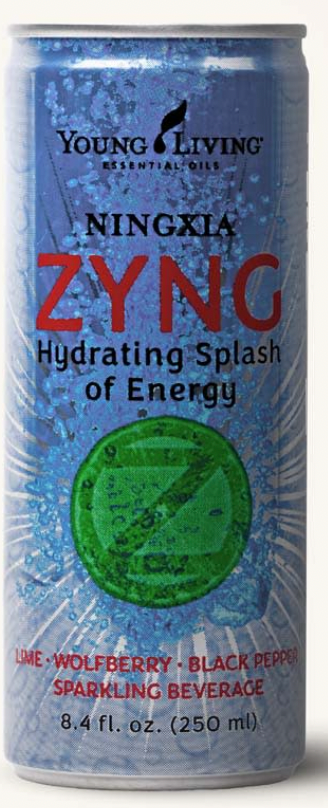
NingXia Zyng® is a refreshing, lightly carbonated drink that combines Ningxia wolfberry puree, pear and blackberry juices, and essential oils with naturally occurring caffeine for an energizing boost.*
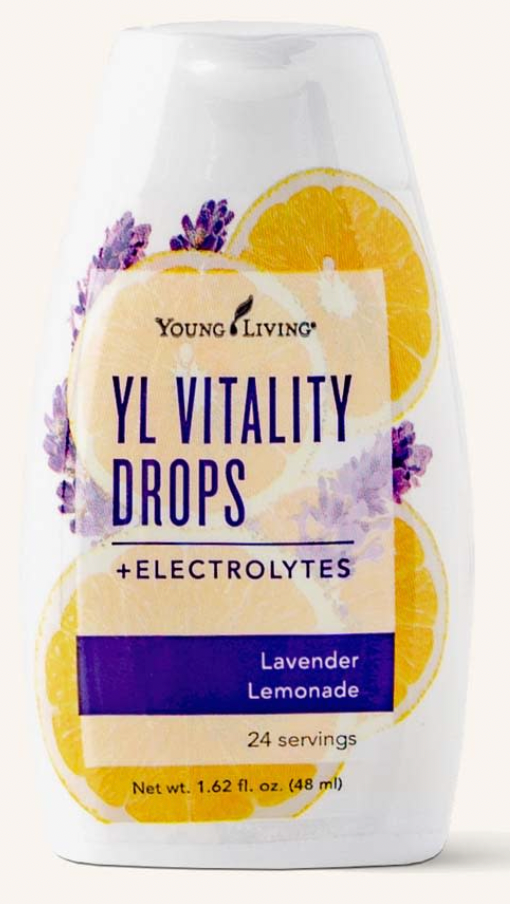

YL Vitality Drops feature Lavender and Lemon essential oils and natural electrolytes for an extra hydration boost. Kickstart your day the natural way! Add one squeeze of either flavor to 8 ounces of cold water for a clean caffeine boost backed by nature.
In conclusion
I hope this blog article has “armed” you with information on how soft drinks are not good for you! My two alternatives; “Zyng” and "Vitality Drops" from Young Living not only made me feel better but my dentist thanked me as well!
This is also a “cheaper” option than piling up those 12 packs from the grocery store! Healthier and Cost-Effective….what a combination!
If you need help ordering either or both products above, please give me a holler and I can guide you through it @ garyrathbun.com
PUT THE CAN DOWN!
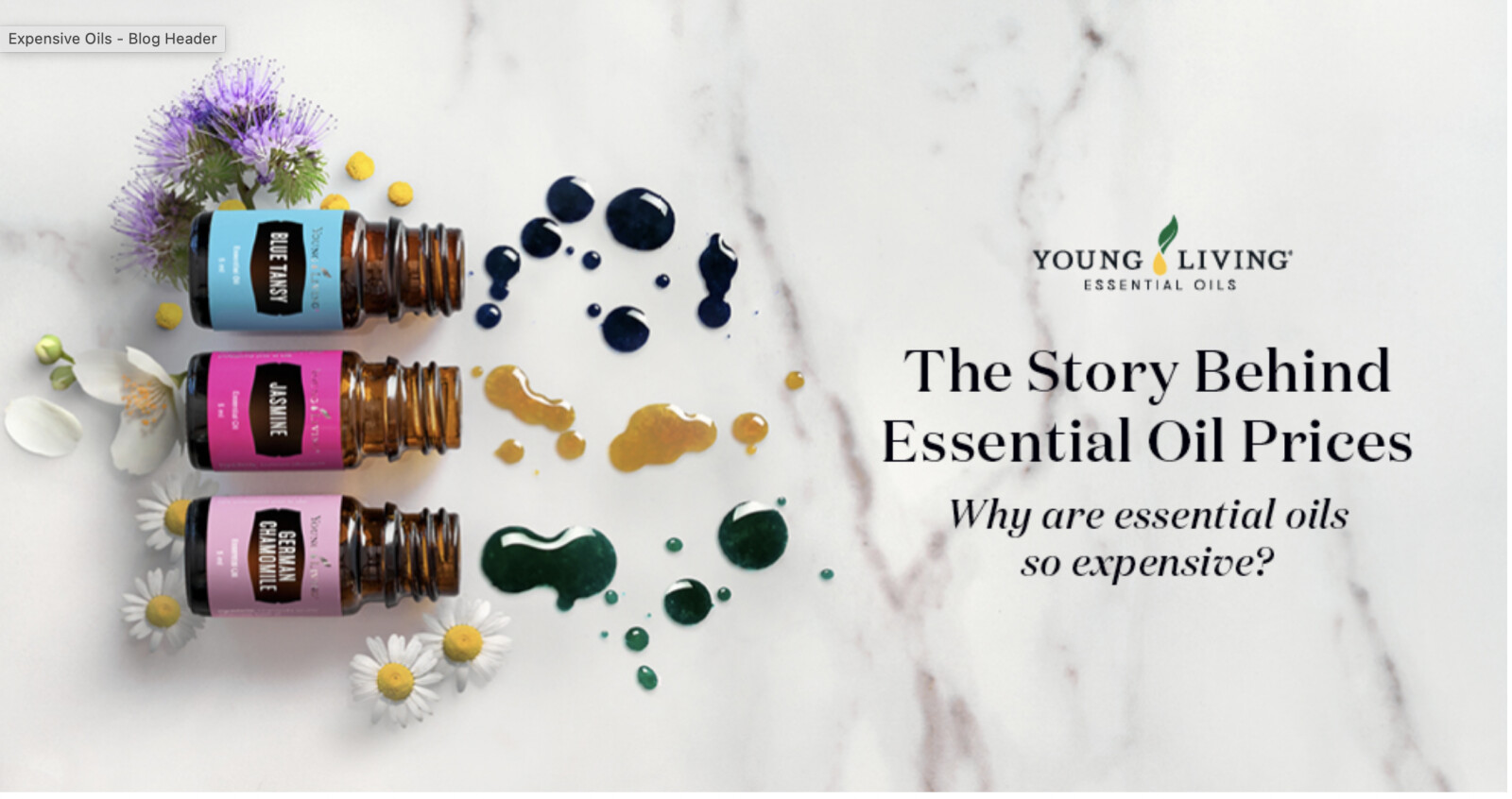
This is a reprint from the Offical Blog of Young Living Australia in its entirety! I thought the topic is also so relevant in the US, so I am sharing it in my blog as well! I was reminded of a saying I heard several years ago that says "It is expensive to be healthy, but it is even more expensive to be sick"! So when choosing an essential oil, remember that quality counts!
Here is the article
The Story Behind Essential Oil Prices: Why are Essential Oils Expensive?
Why are essential oils so expensive? It’s the question that probably pops into everyone’s mind, and you aren’t the first person to wonder why! Like most people, when you are looking into purchasing something for yourself or your home, you do the usual: you do a bit of research, you compare prices, look at the quality, find reviews or ask your friends.
You may have even seen much lower-priced essential oils in local shops and wonder how they compare to Young Living’s premium essential oils. Is the price difference really worth it when it comes to the quality of oils?
The answer is a definite YES. Let’s talk about why this is the case and what factors contribute to the cost of essential oils.
So why are some essential oils costly?
To understand why some essential oils are expensive, it’s important to know how essential oils are made. Essential oils are essentially (for lack of a better word!) plant extracts. They’re made by steaming distilling, resin tapping, or pressing various parts of a plant (flowers, bark, leaves, or fruit) to capture the compounds that produce fragrance or essence. It can take several kilos of a plant to produce a single bottle of essential oil.
The price of essential oils ranges widely. Many factors contribute to why some are more expensive than others. This can include the ease of harvesting the plant, the botanical amount needed to produce the oil, plant time sensitivity, purity of the oil, the rarity of the plant, shipping costs, and more.
How much of a plant does it take to produce an essential oil?
Some plants produce less oil than others when distilled, meaning larger amounts of the plant are needed to produce the same amount of oil. For example, our lovely Rose essential oil is very valuable due to the great effort it takes to cultivate the flowers and all the raw botanical material it takes to produce the final product. Fun fact! It takes 9.98 kilos of rose petals to make ONE 5ml bottle of Rose essential oil! For one 15ml Lemon essential oil, 75 lemons are required.
Harvesting the plant
All plants are unique in several ways, which means they need different amounts of care and attention. Certain botanicals can be extremely sensitive requiring them to be harvested at a specific time of day, month, season, or time of year to ensure we are yielding the best quality of the oil. Melissa essential oil is a great example of this. The distillation of Mellissa is a time-sensitive process that must take place at the right time of the day and a precise moment of blossoming to harness its full potential.
Did you know that the difference between an early morning harvest and an afternoon harvest can be critical enough to decrease oil production by up to 90%! This leaves a tiny window of opportunity to get a proper harvest. Due to the sensitivity of the plant, immediate action after harvest must be taken to ensure viability as any drying of the plant material can severely limit or even destroy the amount of oil obtained from the process.
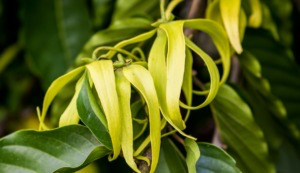
Rarity of the plant
Plants such as lavender and lemon are extremely common, while others are much scarcer. Blue Tansy is a rare, exotic plant that originates on the Mediterranean coast of Morocco. Perhaps Blue Tansy’s most unique feature, chamazulene is the naturally occurring constituent that provides the oil’s characteristically rich, deep-blue color, which appears only after steam distilling the tiny yellow flowers.
Shipping costs
The plants used to produce essential oils originate from different places due to having farms across the world. Shipping them from different countries such as Africa, France and Israel add transportation costs to the price of oil production. Helichrysum is native to coastal France, Italy, and Croatia. Its delicate flowers bloom in rocky soils before a painstakingly careful harvest. When you buy oils, it’s important to research where the botanicals were grown. Farming the plants in their natural environments or in habitats that replicate their native environments is crucial to producing the best-quality oil.
Why are other essential oils so cheap?
If you’ve browsed through different essential oil options offered online or in various other shops at your local shopping center, you’ve likely seen a wide range of prices. And prices that look way more appealing to the eye. Have you taken a look at the ingredients? Researched the company background? Know how they make their oils? Companies with lower-end pricing often use poor-quality oils and dilute them to achieve those cheaper price points.
When shopping for essential oils, double-check they don’t contain any synthetic fillers. Oils singles should only contain one ingredient – the oil itself. For oil blends, ensure that those ingredients are pure botanical oils. Of course, some high-quality blends may be diluted with a neutral carrier oil like jojoba or grapeseed, depending on the product’s intended application. For example, some of our blends, like those in our KidScents® and Animal Scents™ lines, are prediluted with natural oils and/or glycerin to make them safe for use around children and pets. However, as a rule of thumb, you’ll want to avoid additives and dilutions – especially the synthetic ones.
What makes Young Living different from other oil companies?
It can be summed up in one word. Quality. Companies – particularly those that have lower price points – often compromise on their sourcing, formulation, process, and other elements of production. Young Living focuses intensely on getting every element right, and you never have to second guess whether you are getting a high-quality product. We are proud to set the industry standard for quality with our strict Seed to Seal quality commitment. This commitment to naturally derived, plant-based products mean we oversee the making of our oils from start to finish. From the growing of the seeds to harvesting the plants, to obtaining their oils, to rigorously testing the final product. Any time you hold a bottle of Young Living’s powerful essential oils, you hold nature’s pure essence.
To see us in our Seed to Seal action, watch this video and view a day in the life at the Simiane la Rotonde Lavender Farm and Distillery.
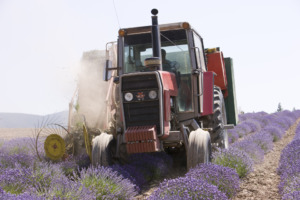
Our Seed to Seal promise ensure that our essential oils are made with the highest quality in mind. This takes out all the guesswork, allowing you to live naturally without a second thought giving you and your family a peace of mind.
While we absolutely love our dearer oils, we understand that especially when building your collection, dropping a lot of your budget on a handful of essential oils may be a bit much. That’s why we’re suggesting some of our favorite, most versatile oils that you can add to your collection for under $30 each!

Check out our farms where our essential oils are grown. Learn more about how and why to focus on the quality of essential oils here. Are you curious about how to use essential oils? A good place to start is our beginner’s guide to essential oils.



